Use Case: Flat Roof Leaks
Undetectable flat roof leaks cost US$12B to repair
Detecting water through a range of different roofing layers. Early detection of water in upper layers can prevent damage to lower layers and also prevents delamination.
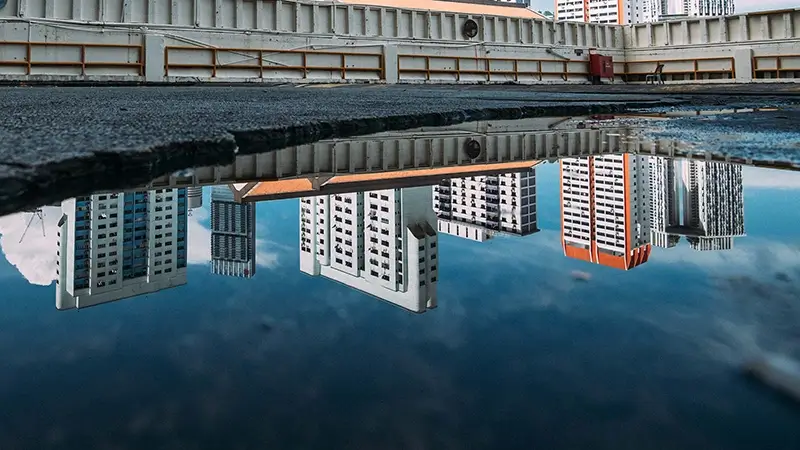
In the US alone, the cost of repairing roofs is over US$12B annually
Flat roofs (having a pitch of ten degrees or less) are usually found on commercial buildings. These relatively level roofs can be beneficial as opposed to pitched roofs as they allow more space, have a simpler design and sometimes are more energy-efficient. However, a major disadvantage of flat roofs is their poor drainage performance, which means they can be more susceptible to leaks.
In the US, the cost of repairing roofs is over US$12B annually, therefore it is essential to detect early signs of flat roof leaks to prevent further destruction to a building’s infrastructure. Current solutions such as handheld electronic leak detection kits or pre-installed sensor cables can imply roughly where the leak is and its severity, but neither captures the ability to detect leaks early with a precise location. LAIIER addresses these issues through its ultra-thin form factor that can easily be scaled to cover a range of roof areas. By converting a leak-prone area to a smart sensing region, water leaks can be quickly pinpointed and resolved.
Market opportunity
-
The commercial building construction industry market size was US$20.9B in 2021.
-
Water leaks in commercial buildings (which primarily have flat roofs) cost on average US$1.4M, compared to domestic homes at just US$4K.
-
The global roofing industry was worth US$111B in 2020, and is backed by a strong demand in the construction sector.
-
There are 5.9M US commercial buildings that total 97B ft2.
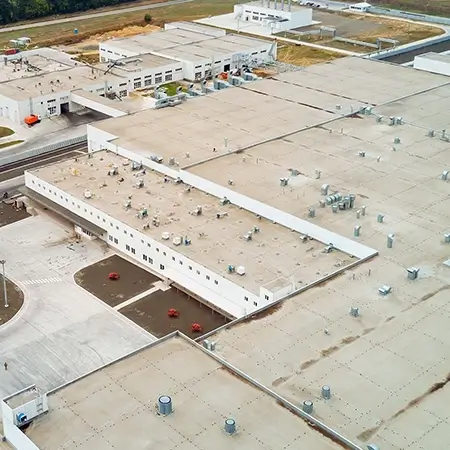
Global roofing industry growth to US$149B by 2026
The global roofing industry is predicted to grow at a CAGR of 4.9% between 2021 and 2026 to reach US$149B by 2026. Prominent regions, due to urbanization and construction activities. Growth areas include China and the US, which are followed by Canada, Japan, and Germany.
Furthermore, the demand for commercial real estate such as data centers and e-commerce warehouses has increased rapidly during the pandemic, meaning that there are more flat roofs to be maintained.
According to AMA Research, the market for flat roof waterproofing systems has grown due to improvements in new builds as well as refurbishments in schools, offices, warehousing, and apartments. This shows there is a demand for preventative measures that address flat roof leaks. Similarly, the demand for predictive measures is growing: the market for water meters, quality sensors, and leak detection systems is forecast to expand with a CAGR of 4.9% to reach US$17.4B by 2024.
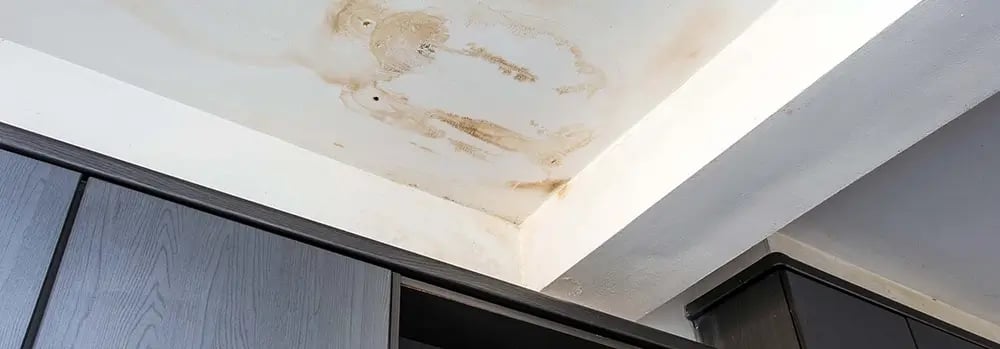
Leaks can occur anywhere on the roof, and are hard to locate
Flat roofs, as one of the most common leak types in commercial buildings, present a vulnerable area. Even if they have a lifetime of around 15 to 20 years after installation, features such as flashing and skylights can degrade at a faster rate. This is especially the case with periods of fluctuating temperatures and precipitation.
The multilayer nature of flat roofs also means that if water bypasses the weatherproof membrane, the reinforcement boards and insulation may be irreversibly damaged and impact the structural elements below. Repairing structural damage can be extremely costly, especially if this reaches any porous concrete. The movement of water through the layers can also create a false impression of where exactly the leak is coming from. This is important as it is cost-effective for building owners to replace only the damaged area.
If the leak is left untreated, serious leaks can create secondary impacts to the occupants such as business downtime, equipment damage and increased insurance premiums. This is why professional inspection is recommended twice or more a year. Inspection by itself for a composite roof structure can be difficult, so specialist electronic leak detection kits can be used to scan the flat roof for pinholes and cracks. As a professional is required, these manual methods may only be called upon after a noticeable leak has appeared which may be too late.
Unlike manual detection methods, there are new companies that install water sensing cables into flat roofs. Cables can be spread to cover large areas, however, they need to be densely arranged for precise leak locating. This can be expensive, which highlights the need for a scalable solution.
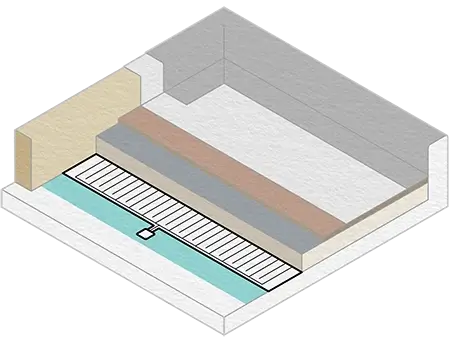
LAIIER's solution: A scalable and precise sensor
To prevent the costly impacts of leaks, it is clear that early and informed sensing is needed. LAIIER’s Liquid Leak sensor is designed as a flexible thin sheet that can unobtrusively be fitted between the mentioned layers of a flat roof. By placing the sensor just below the outer waterproof layer, rather than below boards and insulation, leaks can be detected earlier and more precisely.
Additionally, LAIIER’s LoRaWAN leak detectors are economical so combined with its thin form factor, the sensors can be scaled efficiently to cover the full area of a flat roof. This does not sacrifice accuracy though, as the printed electrodes remain just as precise. The use of LoRaWAN technology within our Surface to Cloud™ platform furthermore provides a power efficient and prompt communication method to notify facility managers.
LAIIER connects the roofing value chain
Building owners and facilities managers
Roof leaking unless caused by a sudden, unexpected event, is not covered by general building or home insurance. Therefore, it is in the interest of building owners to prevent leaking caused by routine degradation on flat roofs. Having a proactive water leak sensing system will also reassure owners who need to protect critical equipment or businesses below.
Insurance companies
By reducing chances of detrimental leaks with early detection, LAIIER's LoRaWAN leak detectors can reduce payout costs and smooth out the unpredictability from leaking flat roofs. This may introduce more opportunities for insurance companies to cover policies associated with general water leaks.
Commercial and industrial roofing services
Usually roofing companies state a certain lifetime guarantee as a key selling point. In addition to this, LAIIER's sensing system can open up more business opportunities through the added value of remote leak sensing. This especially reflects the current movement of the construction industry adopting more IoT solutions
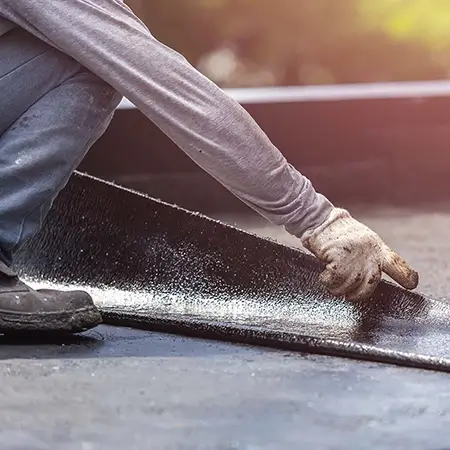
Flat roofs are essential in today’s growing economy with more commercial and industrial buildings required. However, what needs to be addressed is their vulnerability to the outside environment, particularly that flat roofs do not drain water, as well as pitched roofs, do.
On one hand, this can be fixed by stronger roofing materials, but this is expensive and damage is eventually inevitable. Therefore in this use case, we have stated the opportunity of early leak detection to prevent further damage and to also specify the exact location of the leak so repair costs can be minimized. The key traits of LAIIER’s LoRaWAN® water leak detectors being scalable and ultra-thin provide an effective solution for water leak detection in flat roofs.